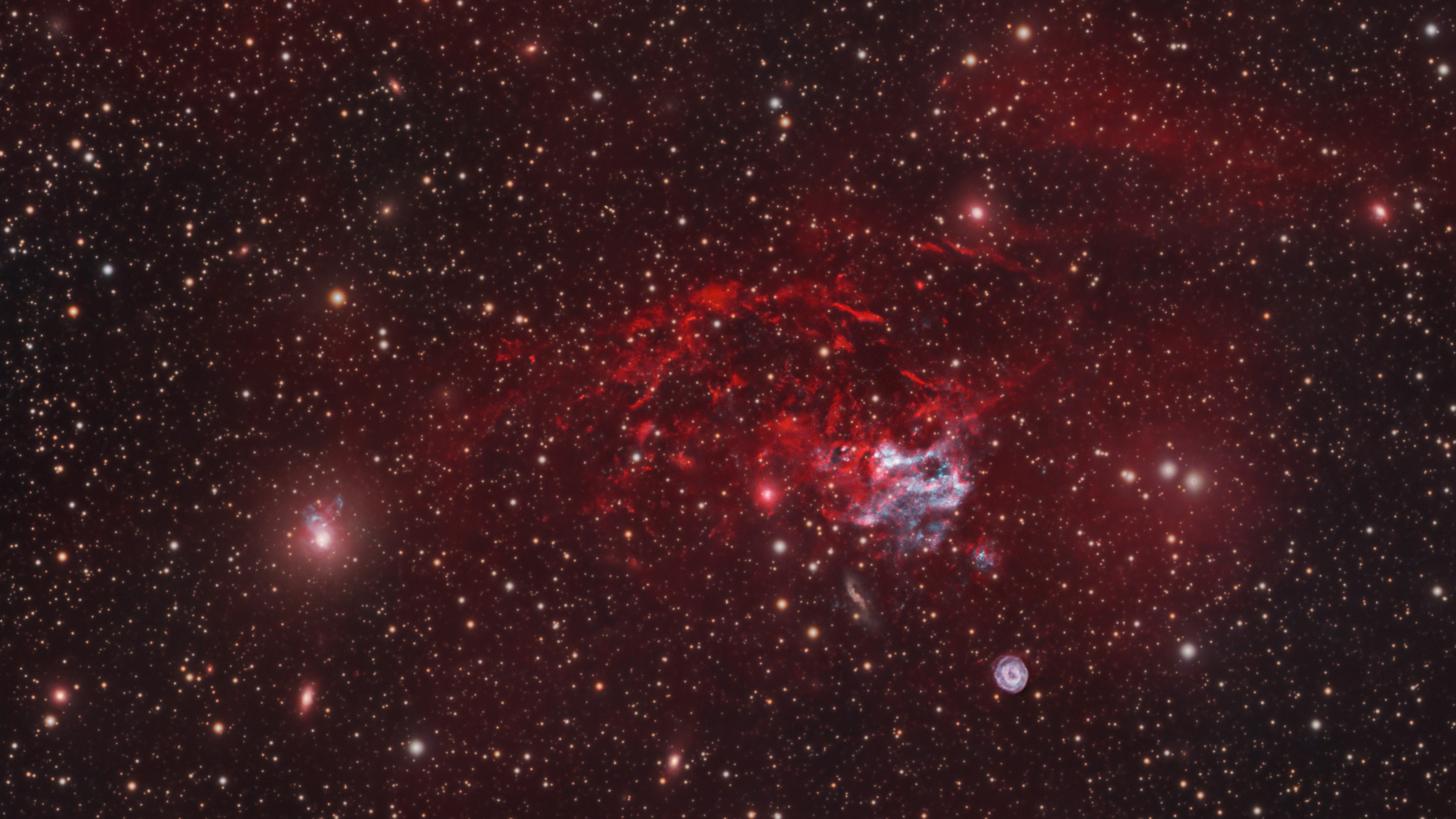
ANAHEIM, Calif. — Long after the black hole in the center of a galaxy sputters out, you can still see its ghost lingering in surrounding gas clouds aglow with leftover radiation, like wisps of smoke emanating from an already extinguished flame. Astronomers call these cosmic ghosts “light echoes” — and that’s what high-school junior Julian Shapiro found while scanning the cosmos for supernova remnants.
“There are these outer regions of gas being ionized by a supermassive black hole, which results in this echo,” Shapiro said at a March 20 presentation here at the 2025 American Physical Society (APS) Global Physics Summit.
Shapiro, 17, is a student at The Dalton School in New York City. But in between classes and scoping out potential colleges, he’s also an independent astronomer who presents at global conferences like this week’s APS meeting.
Originally, Shapiro began sifting through the DECaPS2 survey — an inventory of the southern galactic plane from the Dark Energy Camera at the Cerro Tololo Inter-American Observatory in Chile — to find the debris of exploding stars in supernova remnants and planetary nebulas.
But after zeroing in on one such object, he found its structure didn’t match the wispy filaments characteristic of a supernova remnant, nor did it show evidence of a supernova at its center. “It was a real surprise to stumble upon this,” Shapiro told Live Science.
Related: High school students who came up with ‘impossible’ proof of Pythagorean theorem discover 9 more solutions to the problem
The object, which he believes to be a light echo, stands in a field of potential supermassive black holes. Using measurements from the Southern African Large Telescope, he found high contents of oxygen and ionized sulfur sprinkled into the region — both indicators of shocked material. All of these signs suggest that the object is the afterglow of a now-dormant black hole, which once spewed radiation that ionized the surrounding gas, causing it to emit light even after the black hole quieted down.
An epic echo
Shapiro currently pegs the light echo at about 150,000 to 250,000 light-years in diameter — about 1.5 to two times the width of the entire Milky Way galaxy. And if his estimates hold up, he thinks it could be a viable candidate for the largest light echo ever discovered.
“This object covers a large area in the sky, which makes it a bit easier to get in-depth images of,” Shapiro said.
According to Sasha Plavin, a black hole researcher at Harvard University who was not involved in the research, echoes like the one Shapiro discovered can help us learn more about how black holes behave in the hearts of galaxies.
“I really like how carefully [Shapiro] looked into these images,” Plavin told Live Science. “These galactic events are always of interest, and I think these echoes are a great way of studying them.”
Plavin is also interested in seeing how this new light echo measures up to others — whether it occurred faster or slower than existing examples. “Putting this discovery in a wider context could be useful in the future,” he said.
As Shapiro continues studying the light echo, he hopes to learn more about its composition with measurements of its different regions. But in the meantime, he’s excited to continue contributing to black hole science — even if he came across it by accident.
“My involvement in this area of research came as a bit of a surprise to me,” he said. “But I hope this object, in particular, helps expand the knowledge of galaxy activities that we don’t have too great of an understanding of.”
